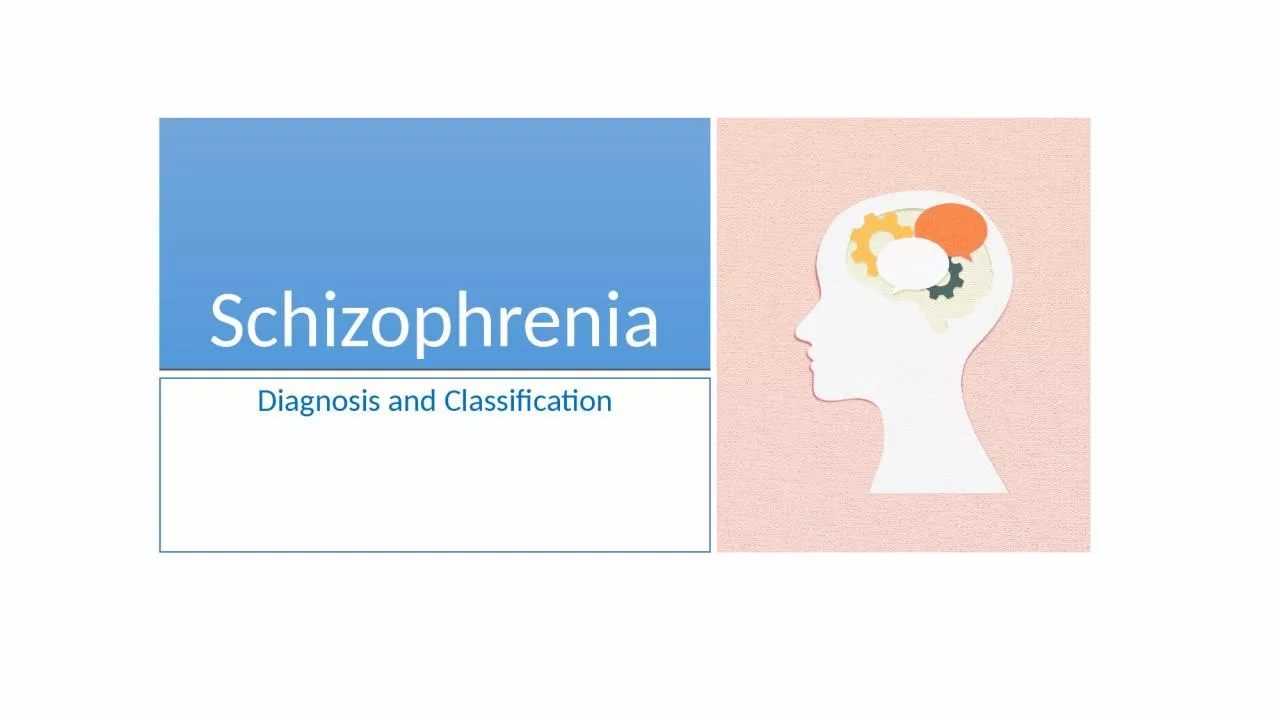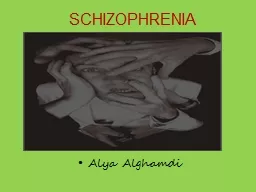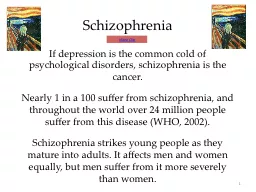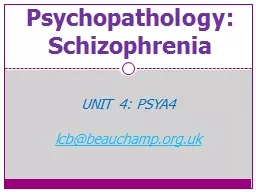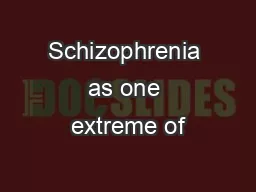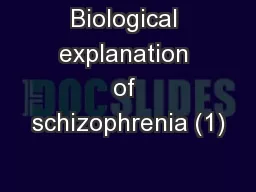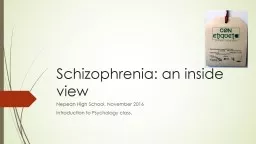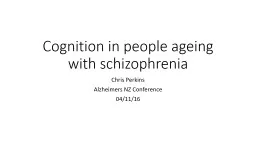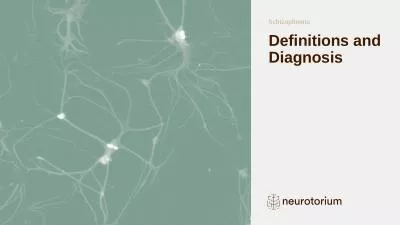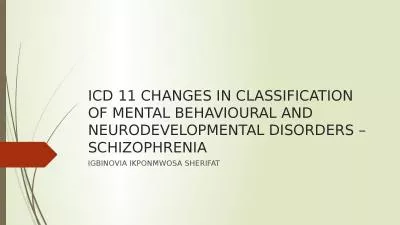PPT-Schizophrenia Diagnosis and Classification
Author : bella | Published Date : 2023-11-21
Starter Activity General Discussion Did you have any misconceptions about schizophrenia before you studied it for homework Had you heard of any of the symptoms
Presentation Embed Code
Download Presentation
Download Presentation The PPT/PDF document "Schizophrenia Diagnosis and Classificati..." is the property of its rightful owner. Permission is granted to download and print the materials on this website for personal, non-commercial use only, and to display it on your personal computer provided you do not modify the materials and that you retain all copyright notices contained in the materials. By downloading content from our website, you accept the terms of this agreement.
Schizophrenia Diagnosis and Classification: Transcript
Download Rules Of Document
"Schizophrenia Diagnosis and Classification"The content belongs to its owner. You may download and print it for personal use, without modification, and keep all copyright notices. By downloading, you agree to these terms.
Related Documents

